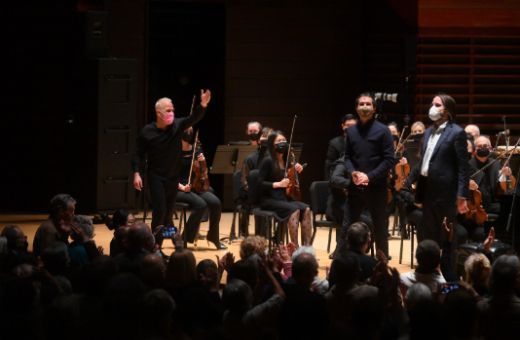Stunning. Staggering. Stupendous. If I were on my mobile, a flood of confetti would now shower across the screen. Deserving these accolades and more is Mason Bates’ three-movement Piano Concerto, which received its world premiere on 14th January with the Philadelphia Orchestra under Yannick Nézet-Séguin.

Ramping up his already legendary energy level to new heights, Nézet-Séguin has in fact created a new “Philadelphia sound” evident throughout this program. It's a sound born of maturity, frustration and exaltation during the pandemic: nearly two years of musical exile. Now, the compromises are gone. The orchestra looked uncharacteristically huge, sprawling across the stage in Verizon Hall. And the sound! Richer, deeper and more nuanced, it proved a perfect complement to the playing of Daniil Trifonov, one of the most mesmerizing pianists of our time.
Co-commissioned by the Philadelphians and the San Francisco Symphony, with support from philanthropists Joseph and Bette Hirsch, Bates composed the concerto during the pandemic with Trifonov in mind. Seldom have composer and artist been so suited to each other. Trifonov and the orchestra tapped ideas across an invisible musical tennis net and intertwined themes with the sleek grace of snakes in a caduceus.
The first movement purports to have Renaissance influences, but my ear detected marvels of an international and timeless sweep. Trifonov opened with a volley of grace notes and a phalanx of solid chords. Pianist and ensemble together merged into sheets of sound more tuneful than the best movie music you can think of (movie music no longer being a pejorative term – thank you, John Williams). The movement is a wonderland of winding musical pathways, where woodwinds pierced through darkening clouds (low voiced instruments) and triplets showered under the pianist’s deft touch.
A triumphant brass choir ushered in soft piano chords as the work slipped into the second movement, full of sad, sweet Romantic melodies. French horns seemed to peel back on each other, like layers in a biscuit. The high notes of the oboe tingled and danced, and later, I noticed that I could feel the vibrations of the entire cello and bass section through the soles of my feet.
The work ends in a high-energy final movement structured around a repeated 1-2-3 rhythm (sometimes 1-2-and-3-4). The whole movement may be a bit chunky, but it yielded a sense of untamed ferocity. As the tension built, Trifonov bobbed from low to high notes, eking the highest decibel levels the keyboard can summon. The orchestra roared, drums thundered, trumpets cascaded in reverse, deliriously. Nézet-Séguin conducted with a wildness I’ve never seen in him before, and yet, the concerto ended in the perfect marriage of reason and emotion, tenderness and the clamor of enveloping sound.
Just as extraordinary was the orchestra’s dramatic rendering of Rimsky-Korsakov’s Scheherazade. I have never heard a better performance. So many fine solo passages, but none so unforgettable as the violin of concertmaster David Kim: exquisite, original, transcendent. All I want at this moment is to hit some cosmic replay button and experience this concert all over again.


